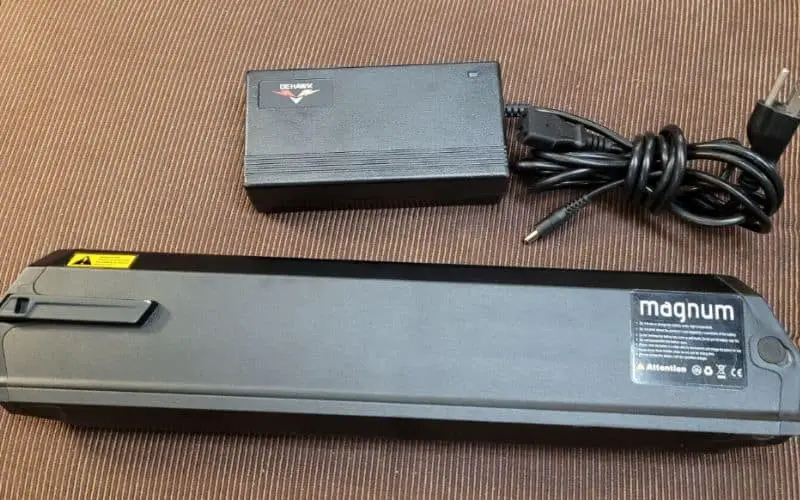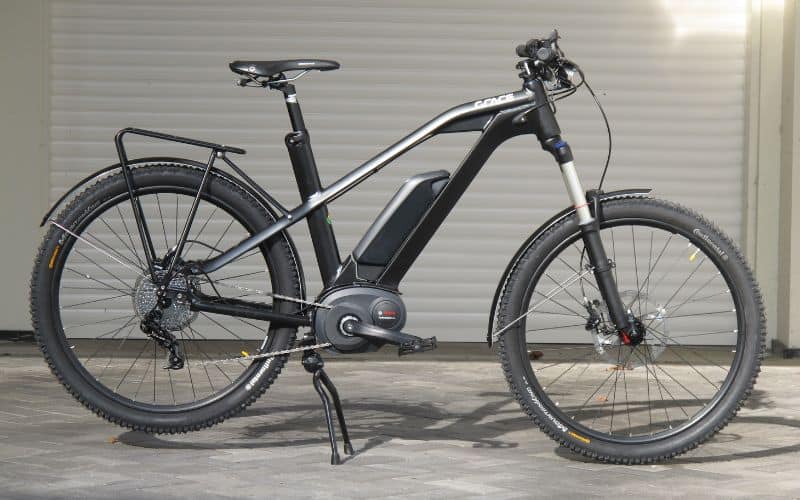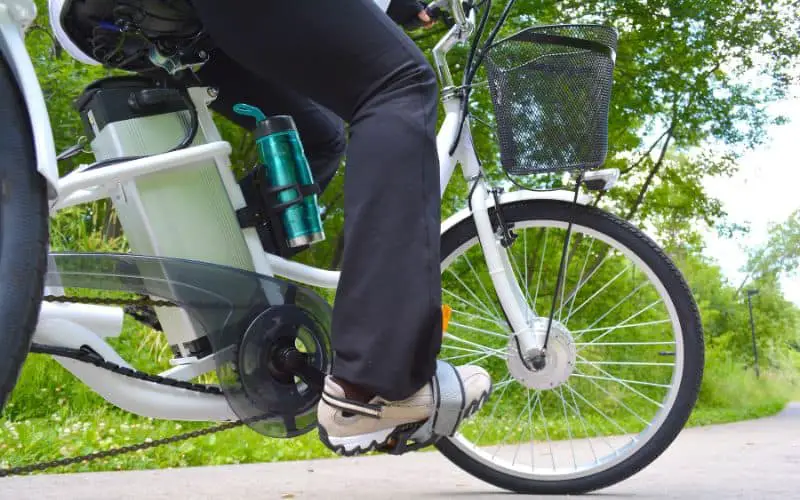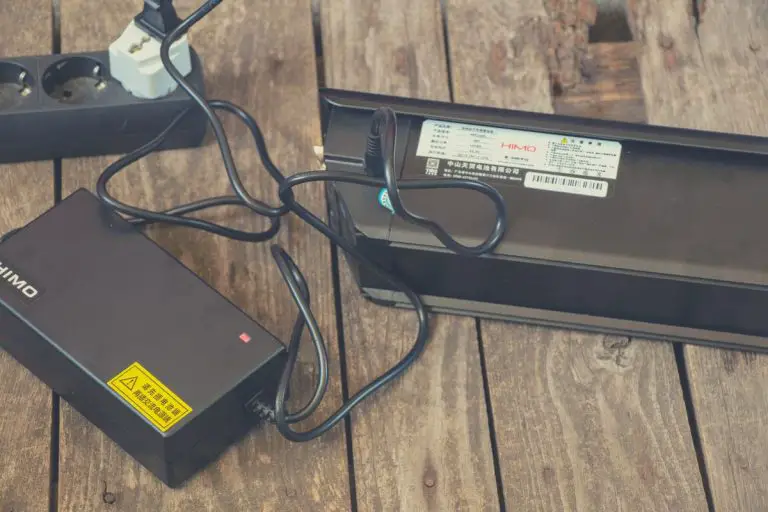I remember discovering the e-bike. Wahoo! Now, I could cruise through town on my local commute. I could go up those hills that otherwise left me pumping and out of breath.
However, as impressive as a battery-powered bike sounded, I also remember hearing about batteries in cell phones melting or catching a whole house on fire. Could this same thing happen to my e-bike battery?
I’d hate to charge up my bike only to see the garage or entire apartment unit ablaze. I decided that the best thing was to ask questions and learn more before plugging in that e-bike charger.
Can You Overcharge An Electric Bike Battery?
Thankfully, most e-bike batteries have “smart charging” functions that cause them to cycle off when they reach a full charge to keep them from dangerously overcharging.
However, there are things to know about an e-bike battery to lengthen its lifespan and keep it from overheating or rendering it useless before its time.
Overcharging means you left the battery in the charger past the time it reached 100% charge. Some people worry that if the battery overcharges, it will overheat, melt, catch fire, or explode. Thankfully, most e-bike batteries come equipped with shut-off features when the battery reaches full charge.
Don’t be overly worried if you leave the battery on the charger. Most batteries nowadays handle it without overheating, melting, or exploding.

Types Of Batteries
The majority of e-bikes come with a lithium-ion or a lithium-ion polymer battery. However, there are many other kinds of rechargeable batteries. For instance, some e-bikes have a:
- nickel-metal hydride battery, NiMh
- lead-acid battery, SLA
- nickel-cadmium battery, NiCd
Avoid Overcharging Or Draining Battery
You have likely noticed this on any electronic device – a full-charge battery slowly drains regardless of use. It’s the same as an e-bike, even if you leave it on the charger. If left on the charger, the battery will start charging again as soon as the stored energy drops.
If the rechargeable battery stays on the charger too long, this charging pulse sequence could lower the battery’s capacity.
Make sure you don’t forget to remove the battery when it reaches 100% charged by using these tricks:
- Using a phone app, use a “smart” power bar or a “smart” plug to control the outlet.
- Set a timer as a reminder to turn the power off when the battery reaches a full charge.
- Use a plug timer set to turn off after a certain amount of time it usually takes to charge the battery fully.
- Set a phone reminder to unplug the charger after a set amount of time, based on how long the battery takes to charge.
How Long Will My E-bike Battery Last?
The lifespan of your e-bike battery depends on what kind of battery it is, its size, how often you use it, and how you take care of the battery.
Charge cycles determine battery lifespans. A charge cycle is how long it takes to use a 100% fully charged battery.
When you overcharge a battery, it experiences a partial charge cycle, ultimately shortening its lifespan.
Typically:
- Li-ion batteries last roughly 2 to 5 years, holding up to about 1,000 charges
- SLA batteries last for about 200 to 300 charge cycles but start to decrease around 100 charges
- NiCd batteries usually last for about 500 charges
- NiMH batteries typically last for about 400 charge cycles
On lead-acid batteries, sulfation sometimes occurs. Sulfation means that when a lead-acid battery overcharges, it results in sulfate buildup inside the battery which reduces the battery’s capacity in the long term.
The manufacturer’s guide will state how many charge cycles to expect. If you are in the habit of overcharging the battery, you will most likely start to notice a drop in the performance of your battery. The distance you can go on a full charge begins to decrease, especially against a well-maintained battery.
Related article – 5 Of The Best Electric Bikes Under $1,500

Ensure Battery Safety
Caring for your battery is essential and will help you get the most out of its lifespan. Even though a well-made, properly working battery shouldn’t overheat, there are still steps to take to ensure safety and lengthen the battery’s lifespan:
Proper Charging Habits
It is possible to overcharge the battery. However, it will most likely not cause any harm. Keep in mind, however, that a faulty battery could overheat.
Follow these proper charging habits:
- A lot of time passes from when the factory first manufactures the battery to when you receive it. Get it charged as soon as you receive it. Charge a new e-bike battery for up to 12 hours. The long first charge ensures current flows through all the cells and helps condition the battery from the start.
- Always only use the charging device that came with your specific e-bike. Using a fast charger with a higher amperage than the original one on the bike could overheat the battery.
- Always test the battery if you are in doubt. With your finger, feel the battery. It should be warm but not hot.
- The instruction manual has been provided for a reason – follow their guidance on charging your e-bike! 😜
- Don’t let the battery sit on the charge for hours on end. When the battery reaches a full charge, please remove it from the charger or unplug the charger.
- Never charge a battery during extreme temperature conditions, below freezing, or in high heat. It should be in a cool, dry place area – and away from any flammable materials.
- Lithium batteries are best to charge fully after a ride.
- Bring the battery inside at room temperature to charge if used in winter. Some batteries won’t even charge if it’s too cold. Use a thermal cover while riding to keep it warmer, but never cover the battery with anything when it is charging.
- Let the battery rest as soon as the ride is over. Give it about a half hour to get back on charge.
- E-bike manufacturers generally recommend keeping your battery charged to between 20 and 80%.
- Make sure the bike and the battery are dry before charging.
- Please remember to take the battery out of the charger as soon as it reaches a full charge.
Charge the battery regularly. Unless your manufacturer specifically requires an occasional complete battery drain, you don’t need to let the battery completely drain. It’s better to charge it only when necessary to keep it between 30 and 60 percent of the remaining capacity.
Interesting read – Can Electric Bikes Go Up Steep Hills?
Proper Battery Storage
Sometimes, you need to store the battery for a while. Follow these helpful tips for proper storage:
- If storing the battery long-term, remove it from the bike and keep it in a spot with adequate temperatures.
- It’s ideal for storing a battery at 40 to 50 percent charge in a spot that avoids extreme temperature conditions. Somewhere between 40 and 70 degrees F or 5 to 20 degrees C is best.
- Take it out of storage and keep charging every so often to ensure it doesn’t run empty.
Interesting read – Can You Carry An Extra Battery For An Electric Bike?

Safety Tips And Extending The Life Of An E-Bike Battery
A few extra tips to keep your battery working as it should.
- When riding your e-bike, use the correct mode. If you ride for a short distance, keep it in eco or low mode to preserve the battery.
- Avoid riding in extreme weather conditions like extreme cold or hot weather, as it puts a strain on the battery.
- Maintain the battery by keeping it clean, dry, and adequately charged by checking the voltage with a multimeter. If the voltage falls below 36V, it’s time to replace the battery.
- Please make sure the connection on the bike is secure so it doesn’t fall out and hit the ground and crack.
- Never overload your e-bike since too much weight could strain the battery. Use a bike trailer to haul heavy loads.
- Batteries are reasonably waterproof. But the contact points need to be kept dry, so they don’t rust.
- Remove the battery when placing the bike on the carrier while traveling. Put the battery in a towel under the car seat.
- If your bike crashes, the battery can become damaged and overheat. Inspect the battery for any damage.
- Don’t ever open up a battery. Lithium powder is highly flammable!
You may also be interested in:

